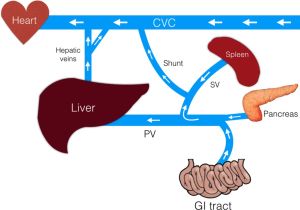An article recently published in Veterinary Record Case Reports describes an unusual case of sudden blindness in a pet cat…
When an eight-year-old female cat presented with an acute onset of blindness, lethargy and poor appetite, the first-opinion vet could be forgiven for not expecting the final diagnosis. The cat was referred to a neurologist, to whom the owners mentioned that she had had several previous episodes of lethargy since she was a kitten, usually lasting less than 24 hours.
On examination, the cat was stunted, had copper-coloured irises and a protruding tongue. The neurological examination revealed several cognitive, cranial nerve and generalised motor abnormalities. Neuroanatomical localisation was consistent with a diffuse forebrain disease.
MRI and routine cerebrospinal fluid analysis revealed no significant findings. However, an abdominal ultrasound scan demonstrated that the splanchnic venous flow was diverted away from the liver (that is hepatofugal flow), via an anomalous tortuous vessel. The liver parenchyma appeared normal and the rest of the abdominal ultrasound was unremarkable. A blood ammonia level measured immediately after sample collection, supported the diagnosis of hepatic encephalopathy secondary to a splenosystemic shunt.
Portosystemic shunts (PSS) are vascular anomalies redirecting the blood from the portal circulation to the systemic circulation. Congenital PSSs, the most common type identified in cats, are the result of an abnormal embryonic vasculature development, and are usually diagnosed in young animals. Acquired PSSs are usually secondary to portal hypertension leading to the opening of pre-existing fetal blood vessels. Signs of hepatic encephalopathy often wax and wane, but neurological signs, including seizures are common.
Simplified representation of the vascular anomaly observed in the cat
CVC, caudal vena cava; GI, gastrointestinal; SV, splenic vein; PV, portal vein
The patient quickly responded to medical treatment and the owners reported in a follow-up consultation five months later that the cat has been completely normal without any episode of abnormal behaviour or visual deficits.
This case raises the importance of considering a PSS as a possible cause of acute onset of neurological signs in adult cats. Additionally, it suggests a potential good response to medical treatment for splenosystemic shunts.
Read about this case in more detail here, including videos (found under supplementary data).
